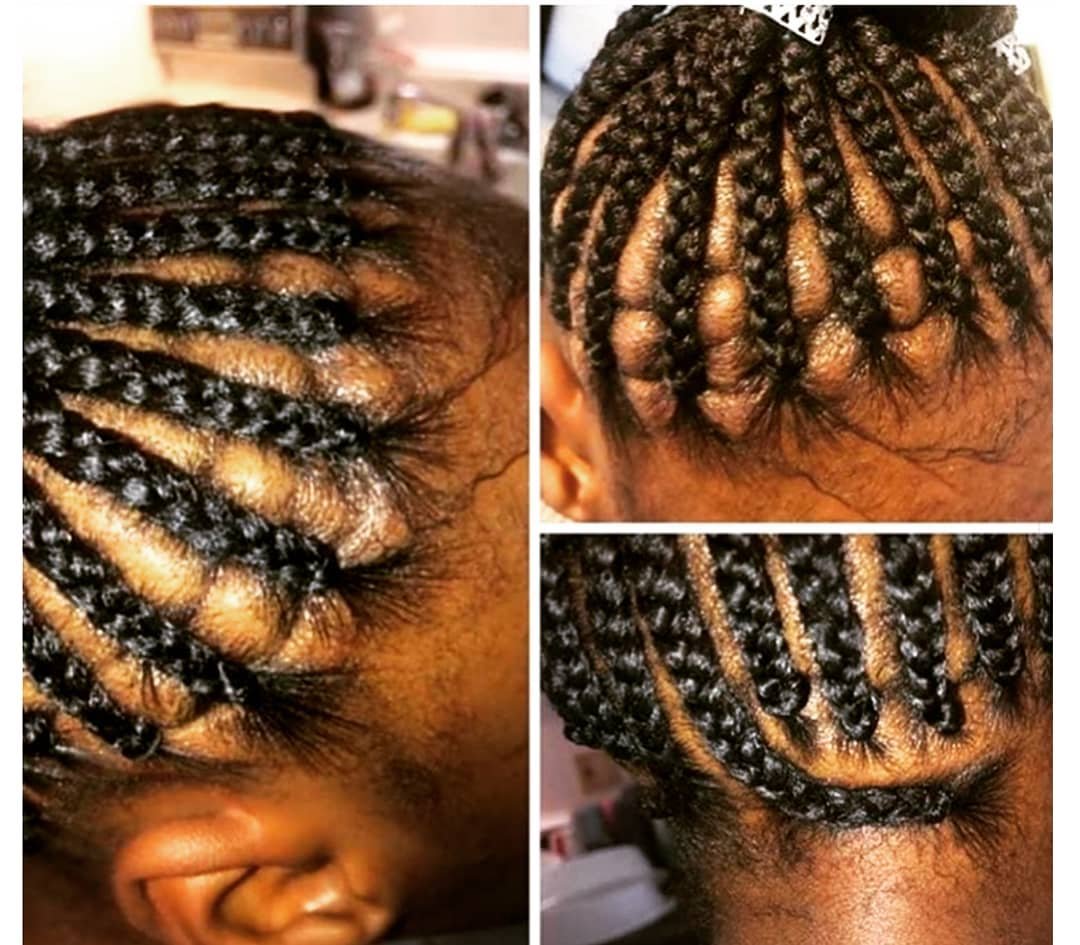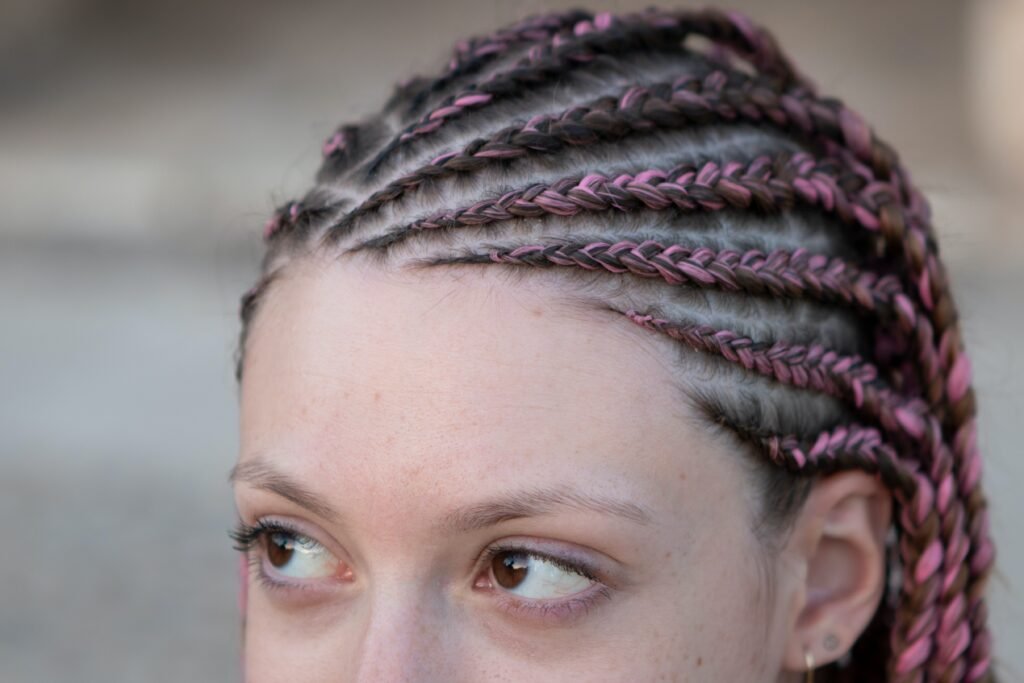Braid Hairstyles
How to Loosen Tight Braids at Home: 8 Easy Ways
If you’ve ever felt the misery of having braids that are too tight, you’ve probably pondered how to loosen them up without destroying your hairdo. And this article will assist you in doing that while maintaining your sense of style.

We sometimes have experienced situations where we wanted to rip out the freshly installed box braids from our heads. Although it is simple to assume that your braids would stay longer if they are tighter, such hair myths should be cast aside. This is because tight braids can ruin your hair permanently.
Your scalp and hair strands may suffer as a result of the stress that produces your sore scalp, which could damage your edges by generating hair breaking and shedding.
Low-maintenance, long-lasting style is definitely the right way to go in terms of aesthetics and protective styling, but when it is too tight, it doesn’t shield or protect the hair anymore, it becomes damaging! If after braiding, you experience a burning scalp, sore roots, and even the development of little white pimples, particularly where your hair is pulled and at the nape of your neck. Then, you’re putting too much pressure on your scalp.
How to Loosen Tight Braids
Follow these tips to loosen tight braids:
1. Utilizing a Comb
To get some relaxation, tuck the tail end of a fine-toothed or rat-tailed comb under the cornrows or tight braids. To release the braids at the scalp, gently move the comb around there. Keep in mind to proceed gently to prevent causing the braids any additional harm or damage. And the braids will become looser with time.
2. Add a leave-in conditioner next
A leave-in conditioner can keep your hair moisturized all day, and soaking your scalp with it can assist to relax and tighten your skin. To do this, place a small quantity of conditioner in your palms and gently rub it into your braids and scalp.
3. Oils to the Rescue!
Another successful method is daily scalp massage with light oils; however, this must be done softly and often for it to be beneficial. By improving blood circulation, massaging the scalp with hair oils also helps to stimulate natural hair growth.
4. Apply a braiding spray
To soften and loosen your hair, use a braid spray. Invest in a braid spray that has been carefully developed to soften hair and calm the scalp if you frequently get your hair braided. To stop itching and moisturize your braids, which will soften and loosen them, spritz the braid spray on your scalp.
Use this spray when getting ready in the morning and as needed during the day to ease any stress that may arise.
5. Wash the Braids
Try cleaning your braids! It reduces the suppleness and braids’ tension. To begin, lather up your palms with a generous amount of clarifying shampoo, rub them together, and then gently massage your scalp, paying close attention to any uncomfortable spots.
Another option is to dilute the shampoo and put it in a spray bottle. Then, using an old toothbrush, brush the scalp where the braids are. This method works well.
Another useful technique is an acid vinegar rinse. To use it, mix 2.5 cups of ACV with a bowl of warm water and rinse your scalp thoroughly. After that, thoroughly rinse the hair while lathering it over the braids. Avoid vigorously or excessively rubbing the braids as this could result in frizz. Keep in mind that the scalp is the main emphasis on braid wash days! This procedure would also lessen the itching caused by synthetic hair.
Then apply conditioner and carefully massage your braids with a towel to remove any excess water.
6. Try some Pain killers!
Pain from tight braids can be relieved with over-the-counter medications such as Tylenol, Advil, and Aleve. The braids will gradually loosen and become tolerable if you take the medication for a few days.
7. A Hair Steamer
Install the hair steamer before settling in. Focusing on the areas of your braids where you are experiencing the most tension, direct the steam there. Until your braids feel better, sit under the hair steamer for 10-minute periods with brief rests in between. To improve the alleviation, deep-condition your hair before putting it under the steamer.
8. Squeeze a damp towel
Spend an hour with a warm, moist towel wrapped around your head. Your braids’ flexibility and tension will be reduced by wet heat directly applied to them. Start by soaking a towel in warm water. After gently wrapping the towel over your head to resemble a turban, squeeze out any remaining moisture. Before taking out the towel, let your hair sit there for an hour.
How to Prevent Tight Braids

1. Inform your stylist about your feelings right away. Telling your stylist that your braids are too tight is nothing to be terrified of! Speak up as soon as you see the braids are too tight since as a paying customer, you should feel confident in your look. Inform the stylist as soon as possible so they can fix the issue before they finish all of your braids.
2. Don’t keep quiet about the pain out of fear of being referred to as a wimp. You aren’t! And, you have every right to speak up if the pain becomes intolerable and the braid becomes too much for you to take. The women out there who accuse you of being weak, complaining that your braids are too tight, lack edges!
3. Steer clear of stylists who consistently braid too tightly. It should just take one remark to a stylist to persuade them to loosen up their braiding technique. Avoid going to the same hairdresser for future braids if you tell them the braids are too tight yet the issue persists.
Make an appointment with a new hairdresser after researching the others in the region. See what other people are saying about the stylist’s methods by checking out their online reviews. Most importantly, if you have a stylist who consistently gets the job done, continue with them.
4. After getting new braids, stay away from updos for a few days. When you wear your braids up in a bun or another updo, especially shortly after getting them done, the tightness may intensify.
Wear your hair down for a few days after getting your hair braided to reduce further stress on your scalp. Consider letting your braids fall lightly over your shoulders. Your braids should be tied back gently into a low ponytail if you want them out of your face. Avoid rubber bands and use a loose fabric hair tie instead.
5. If the braids continue to hurt, remove them as a last resort. Even though you may have paid a sizable sum of money to have your hair braided, removing them is the best option if they are painful and excessively tight.
Traction alopecia, or excessive hair loss from stress on the scalp, especially at the hair lines and edges, is undoubtedly around the corner if you wear your hair in a protective style that pulls at the root.
Conclusion
With the help of the aforementioned techniques, tight braids may become looser with time, but if not, don’t let anyone minimize your suffering and take it down!


